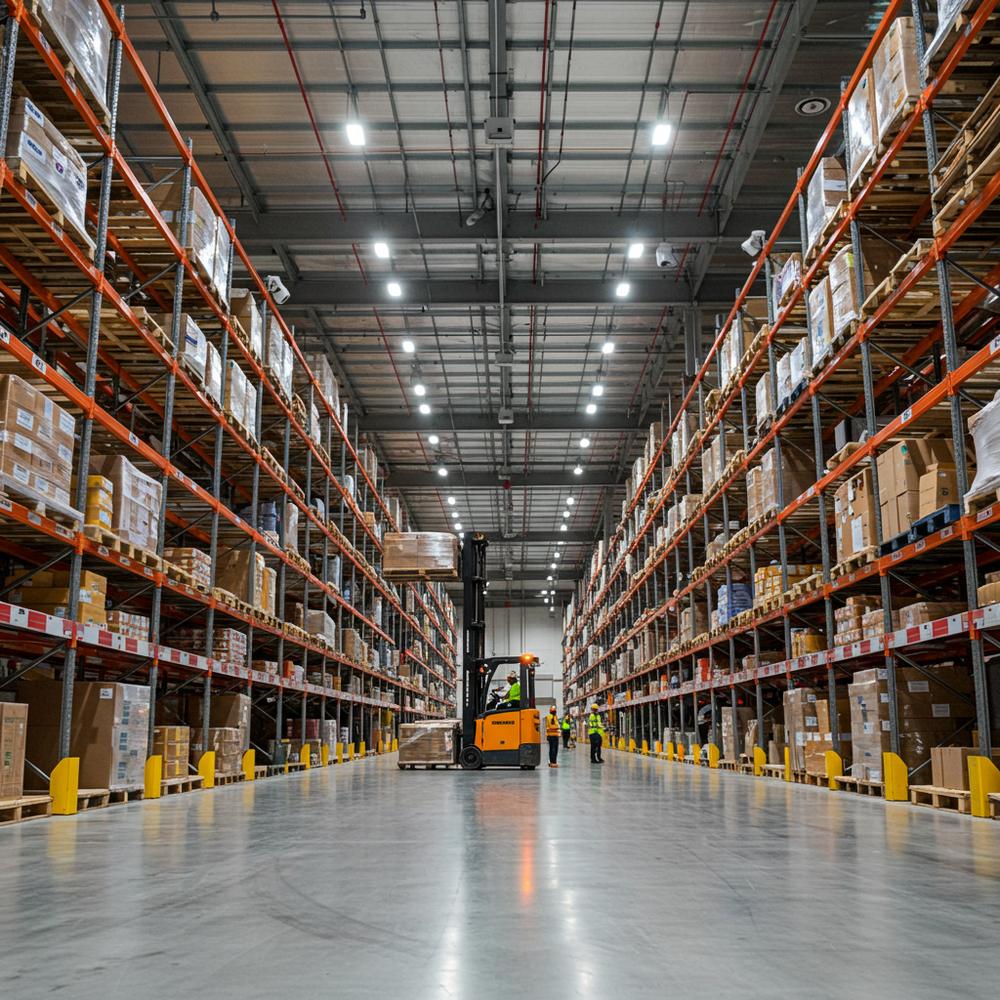Video Surveillance for Warehouses in Oman – What You Should Know

Oman’s strategic location and burgeoning economy have fueled the growth of its logistics and warehousing sectors. Warehouses, serving as critical hubs for storage and distribution, hold vast amounts of valuable inventory, making them prime targets for theft, vandalism, and unauthorized access. Beyond external threats, internal issues like inventory discrepancies, operational inefficiencies, and safety hazards also pose significant challenges. In this dynamic environment, robust video surveillance is no longer a luxury but an absolute necessity for safeguarding assets, optimizing operations, and ensuring compliance. This comprehensive guide will explore everything you should know about implementing effective video surveillance for warehouses in Oman.
Why Video Surveillance is Crucial for Warehouses in Oman
Investing in a sophisticated video surveillance system offers a multitude of benefits that directly impact a warehouse’s security, efficiency, and profitability.
Theft Prevention and Deterrence
One of the primary reasons for deploying CCTV in warehouses is to deter and prevent theft. Visible cameras act as a strong deterrent against both external intruders and internal pilferage. High-resolution footage provides undeniable evidence for investigations, making it easier to identify culprits and recover stolen goods. This significantly reduces losses and protects the bottom line.
Enhanced Inventory Management and Accuracy
Surveillance cameras can monitor goods movement, loading, and unloading processes. This visual record helps in verifying shipments, tracking inventory, and resolving disputes related to missing items or damaged goods. It complements traditional inventory systems by providing an extra layer of visual audit, improving accuracy and reducing errors.
Employee Monitoring and Productivity
While respecting privacy, cameras can monitor employee activities, ensuring adherence to safety protocols and operational procedures. This oversight helps in identifying inefficient practices, improving workflow, and encouraging accountability. It can also serve as a tool for training and performance evaluation.
Safety and Accident Prevention
Warehouses are often bustling environments with heavy machinery and complex operations, posing inherent safety risks. Video surveillance allows for real-time monitoring of potential hazards, ensuring employees follow safety guidelines, and quickly responding to accidents. Recorded footage can be invaluable for post-incident analysis, helping to implement preventive measures.
Evidence for Disputes and Insurance Claims
In the unfortunate event of a break-in, damage, or operational dispute, high-quality video footage serves as crucial evidence. It simplifies police investigations, strengthens insurance claims, and can be pivotal in legal proceedings, protecting the warehouse owner from potential liabilities.
Key Components of a Warehouse Surveillance System
A modern warehouse surveillance system is an integrated network of specialized equipment designed for optimal coverage and performance.
Camera Types
- IP Cameras: Offering high-resolution video and network connectivity, IP cameras are the backbone of modern systems, providing sharp images suitable for identification.
- Dome Cameras: Discreet and vandal-resistant, often used indoors or in areas where aesthetics and protection are priorities.
- Bullet Cameras: Easily recognizable and robust, suitable for outdoor use and as a visible deterrent. They often come with long-range night vision.
- PTZ (Pan-Tilt-Zoom) Cameras: Remotely controllable cameras that can cover large areas, ideal for monitoring specific events or suspicious activities.
- Thermal Cameras: Excellent for low-light conditions or detecting objects based on heat signatures, even through smoke or fog.
- Fisheye Cameras: Provide a 360-degree panoramic view from a single camera, ideal for open spaces with minimal obstructions.
Video Management System (VMS)
The VMS is the software platform that allows users to view live feeds, manage recordings, configure cameras, and utilize advanced analytics. A robust VMS is essential for efficient operation of a large-scale system.
Network Video Recorders (NVRs) and Digital Video Recorders (DVRs)
NVRs are used with IP cameras, recording digital footage directly from the network. DVRs convert analog camera signals into digital format for recording. NVRs are generally preferred for their superior quality and flexibility.
Storage Solutions
Adequate storage is critical. Options include on-site NVR/DVR storage, network-attached storage (NAS), or cloud-based solutions, often a hybrid approach for redundancy and accessibility.
Analytics and AI Features
Modern systems leverage AI for advanced features like motion detection, object tracking, facial recognition, license plate recognition (LPR), crowd density analysis, and abnormal behavior detection. These features greatly enhance the system’s proactive capabilities.
Remote Access and Monitoring
The ability to access camera feeds and recordings remotely via smartphones, tablets, or computers is crucial for management and security personnel who need to monitor operations from anywhere.
Legal and Regulatory Considerations in Oman
While specific, exhaustive regulations for commercial CCTV in Oman might be evolving, general principles of data privacy and security always apply. Businesses must ensure that surveillance systems are implemented ethically and legally. This includes:
- Privacy of Individuals: Clearly notify employees and visitors about the presence of surveillance cameras. Avoid placing cameras in highly private areas like restrooms.
- Data Protection: Ensure recorded data is stored securely, protected from unauthorized access, and retained only for necessary periods.
- Compliance: Adhere to any general Omani laws concerning public and private security, data handling, and labor regulations. Consulting with local legal experts is always advisable.
Choosing the Right Surveillance System for Your Omani Warehouse
Selecting the ideal system requires careful consideration of several factors unique to your warehouse environment in Oman.
Assess Your Specific Needs
Evaluate the size and layout of your warehouse, the type of goods stored, high-risk areas, entry/exit points, and budget. A comprehensive risk assessment will inform the best camera placement and system features. Consider future expansion plans to ensure scalability.
Scalability and Integration
Choose a system that can easily scale up as your business grows and integrate with other security systems like access control, alarm systems, or fire detection. This creates a unified security ecosystem.
Reliability and Durability
Given Oman’s climate, outdoor cameras must be robust and weather-resistant (IP-rated). All components should be reliable, capable of continuous operation, and backed by strong warranties.
Professional Installation and Support
The effectiveness of any surveillance system hinges on its professional installation and configuration. Expert technicians ensure optimal camera angles, proper wiring, network setup, and system integration. Furthermore, reliable after-sales support and maintenance are crucial for long-term performance. When seeking advanced warehouse surveillance systems in Oman, businesses often turn to trusted providers like easytechno, known for their comprehensive security solutions and dedication to client needs. They can provide tailored advice and implement systems that meet stringent security requirements.
Future Trends in Warehouse Surveillance
The field of video surveillance is constantly evolving. Future trends for warehouse security include:
- Enhanced AI and Machine Learning: More sophisticated analytics that can predict potential threats, optimize routes, and even manage robotic systems within the warehouse.
- Cloud-Based Solutions: Greater reliance on cloud storage and processing for flexibility, scalability, and remote management, reducing the need for on-site hardware.
- IoT Integration: Seamless integration with Internet of Things (IoT) sensors and devices for a more holistic view of the warehouse environment, combining video with environmental data, asset tracking, and more.
- Drone Surveillance: Automated drones for internal audits, quick perimeter checks, and even responding to alarm triggers, offering dynamic aerial perspectives.
Embracing these technologies will enable warehouses in Oman to become even more secure, efficient, and future-proof. For comprehensive security solutions, including the latest in video surveillance, exploring options with experienced providers is key to securing your valuable assets. Visit easytechno.net to learn more about modern surveillance technologies.
Conclusion
In the burgeoning economic landscape of Oman, securing warehouse operations with advanced video surveillance is an indispensable investment. From deterring theft and ensuring safety to enhancing operational efficiency and providing crucial evidence, the benefits are far-reaching. By understanding the key components, considering legal aspects, and partnering with experienced professionals, warehouse owners and managers can implement a robust, scalable, and intelligent surveillance system. This not only protects valuable assets but also contributes significantly to the overall productivity and long-term success of their logistics operations in Oman. To further explore how cutting-edge technology can safeguard your premises, consider engaging with experts in the field of security systems in Oman.
